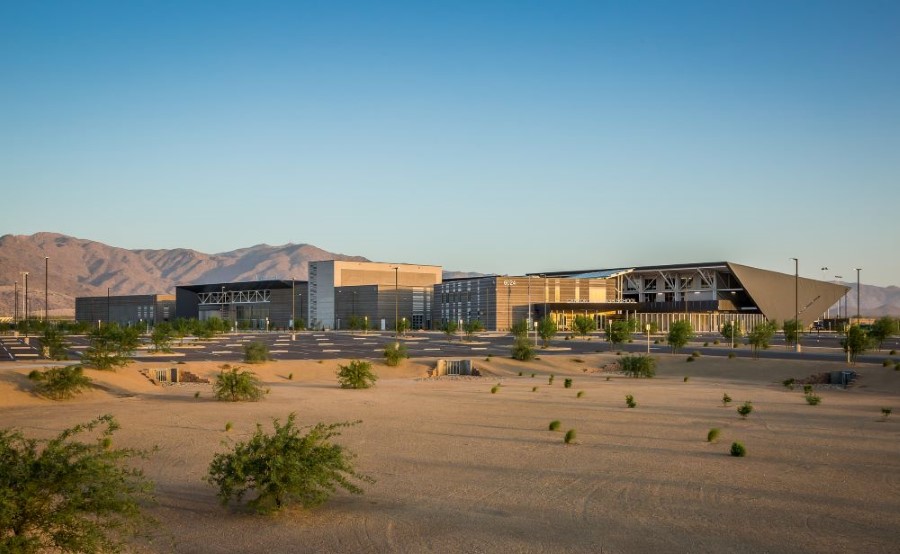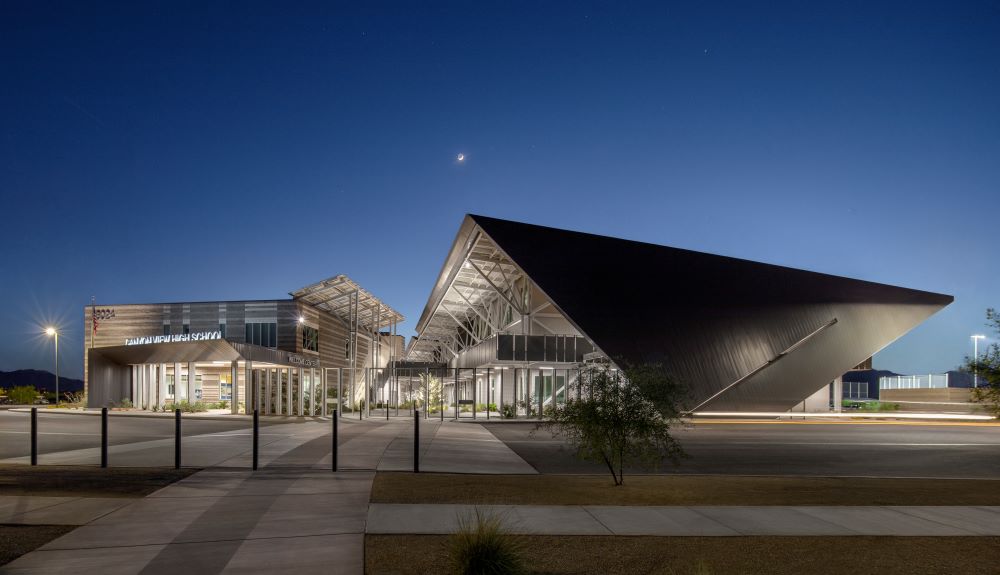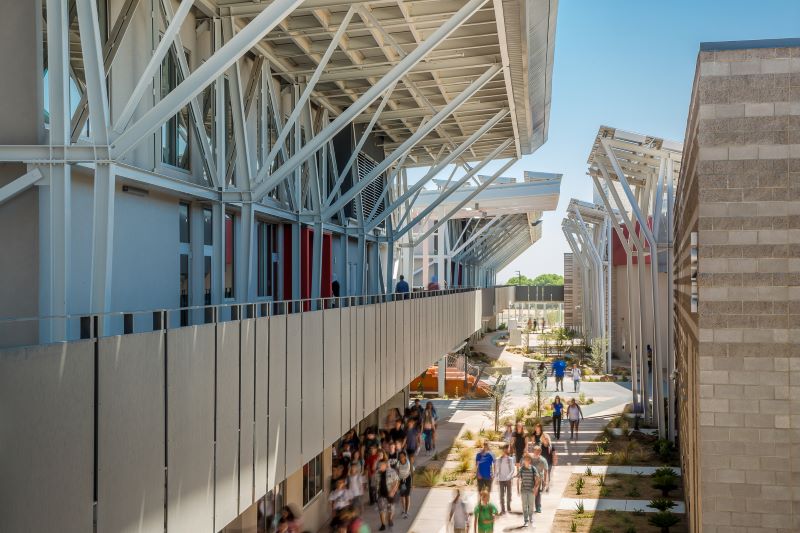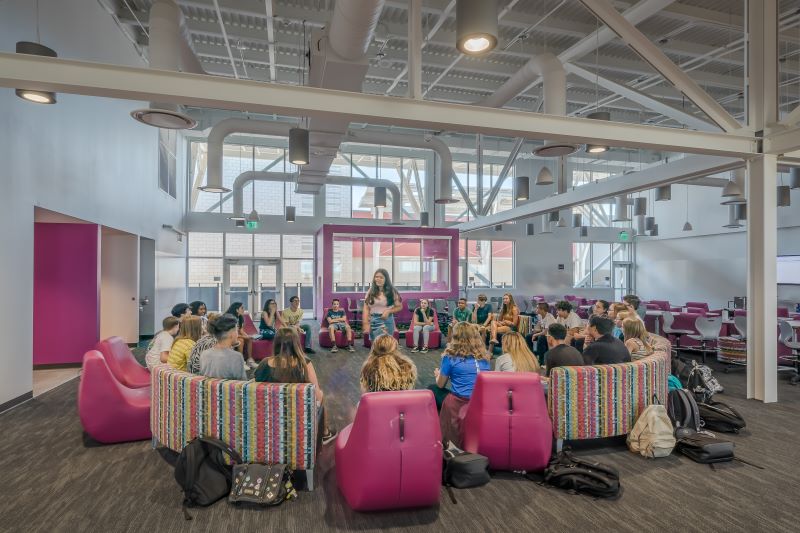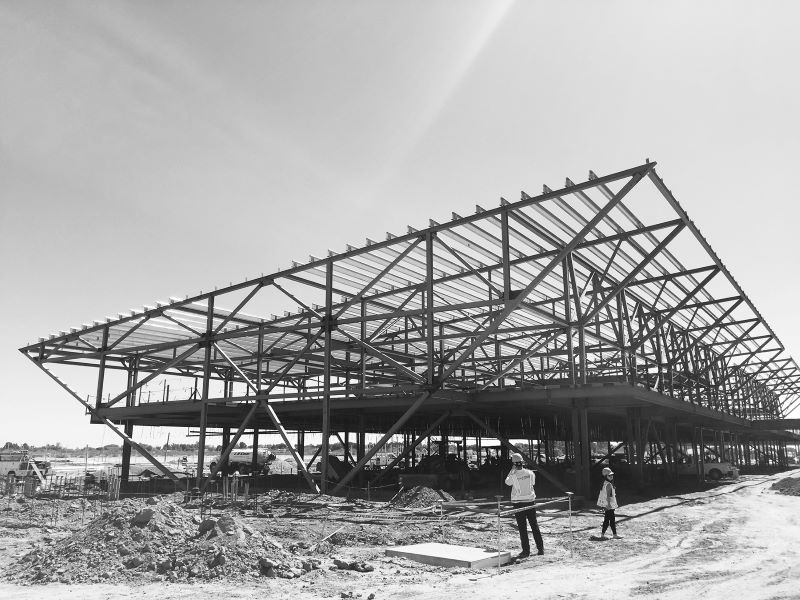AISC
Canyon View High School
Merit Award - $15 million to $75 million
This high school breaks all the norms of institutional architecture. It actually makes the classroom seamlessly flow into the outside environment. If I were going back to school now, this is the high school I would want to go to. —2020 IDEAS² Judge Cynthia Duncan
Energy efficiency was the goal for the team behind the new Canyon View High School in Waddell, Ariz.
And its structural system was a driving factor in meeting those goals. The structural system became the centerpiece of the design conversation early on as the key element to providing flexible learning environments that extend to comfortable outdoor spaces. The design team’s exposed structural steel framing concept allows natural lighting to penetrate deep into the learning spaces, creating a unique experience seldom found in a traditional high school.
The new 231,000-sq.-ft high school in a suburb of Phoenix extends beyond the built environment to demonstrate how a building interacts with people, resulting in an unprecedented design that elevates learning. A first-of-its-kind learning “Accelerator” contains unique and flexible space imagined and executed through spatial agility. And towering solar structures shade the central “Agora” that spans the entire length of the campus, maintaining a peak temperature of 85 degrees F. In addition, this 225 KW photovoltaic system contributes 20% of the energy needed for the campus. The shape of human DNA served as a pattern for the building-supported and freestanding cantilevered steel structures that make up the solar components. The structures themselves are yet another learning tool for students.
Early designs had buildings made from the school’s two primary framing systems—steel and masonry—dispersed throughout campus. However, working with contractor Chasse Building Team, architect and structural engineer DLR Group realized labor savings by separating the two building types on either side of the Agora. By rearranging all of the steel buildings to the north side and all of the masonry buildings to the south side, the build team cut nearly two months off the schedule, thus streamlining the work and enabling both steel and masonry subcontractors to work simultaneously. Early and continued collaboration with the contractor and steel fabricator during the design phase allowed the team to validate cost, detailing, and constructability. Ultimately, this collaboration was instrumental to the success of the project and to achieving the school district’s overall program and design goals.
Exposing the structural elements, as opposed to hiding them behind finishes, helped further reduce the project’s cost. It also demonstrates to students, faculty, and visitors how structural framing elements that are typically hidden can create stability, enclosure, and aesthetic contributions. The structural steel-framed buildings form flexible academic “Forts” that create high volumes for daylighting and extensive shading for the outdoor space. Movable space partitions and mobile, flexible furniture create the spatial agility required for the school district’s curriculum. When it comes to the Accelerator, a long-span steel structure bridges the two masonry buildings to create a cohesive framing and lateral system without introducing a building expansion joint and secondary support/bracing systems. With the space anchored by two masonry buildings on each side, the long-span joist and joist girder system allows for minimal columns, and the masonry buildings create lateral stability for the interior steel framing. In addition, the roof diaphragm design helps resolve the rotational force to the masonry shear walls on each side of the Accelerator and auditorium spaces.
A high-tech school called for high-tech design solutions. The use of animation and virtual reality were key to communicating the design and functionality of the spaces to the client and students. The contractor used 360° photography during construction to help document embedded systems for quality control and future maintenance. Images from an aerial drone—shared with the design team, school district, and community—helped document the construction progress as the new high school took shape.
Steel fabricator: Skyline Steel, Inc., Gilbert, Ariz. *AISC Certified*
Steel detailer and erector: Schuff Steel Management Company, Mesa, Ariz. *AISC Member* *AISC Certified*
Architect and structural engineer: DLR Group, Phoenix
General contractor: Chasse Building Team, Tempe, Ariz.
Project ownership: Agua Fria Union High School District #216, Avondale, Ariz.
- Location: Waddell, AZ
- Award Winner Year: 2020
- Year Completed: 2018
- Submitting Firm: DLR Group
- Photo Credit: 1, 3, 4 - Thomas Reich; 2 - Bill Timmerman; 5 - DLR Group

